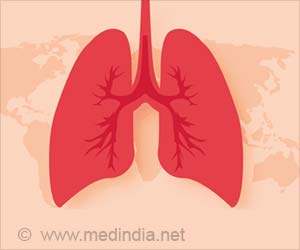The new findings have very important implications for understanding and potentially treating cough disorders because it appears that different types of coughs may use different brain circuits.

‘The new findings have very important implications for understanding and potentially treating cough disorders because it appears that different types of coughs may use different brain circuits.’





The act of coughing typically begins with an irritating stimulus within the larynx, airways or lungs that activates cough-evoking sensory nerves. These sensory nerves transmit this information to the brain, where the information is modifies the actions of the breathing muscles, to produce a cough response. These signals are also sometimes combined with "higher order" signals that make your throat tickle, make you feel annoyed or anxious at having a cough, and allow you to suppress or enhance your cough voluntarily.
Previous research in animals and humans suggested that the brain processes all inputs from cough sensory nerves in a single area. However, in an earlier study using guinea pigs, published this year in The Journal of Physiology, the same research team from Monash University and the University of Melbourne demonstrated that this is unlikely to be true.
Instead, they discovered that separate pathways in the brain are involved in the response to a good (needed to clear airways, to ensure optimal lung health) vs a bad cough (a sign of disease).
In this new study, human participants underwent behavioural testing to assess cough reflex sensitivity followed by functional brain imaging in an MRI scanner while inhaling different chemical substances.
Advertisement
Another chemical stimulus was adenosine triphosphate (ATP), best known as an energy molecule in cells but it also selectively activates one of the two subsets of sensory nerves involved in coughing.
Advertisement
High resolution brainstem scans were collected during repeated randomised presentations of these stimuli, and the scans were analysed to identify where in the brainstem the neural responses to capsaicin and ATP are located.
The outcome showed that capsaicin inhalation activated both the nucleus of the solitary tract and the area of the brainstem containing the paratrigeminal nucleus, whereas ATP inhalation only activated the nucleus of the solitary tract.
The data confirm the team's prior studies using guinea pigs, in that one cough pathway (sensitive to both capsaicin and ATP) is integrated in the nucleus of the solitary tract while the other cough pathway (sensitive to capsaicin only) involves integration in the paratrigeminal nucleus.
Commenting on the study, senior author Professor Stuart Mazzone said: "Chronic cough is a horribly unpleasant ailment. People can find themselves coughing hundreds of times every hour of their waking lives, for years on end, and current medicines simply aren't effective at relieving this condition."
"We are now performing a similar study comparing how these two different brain networks respond in patients with chronic troublesome coughing compared to healthy participants. This new study is also motivated by recent clinical trial outcomes showing a promising cough suppressing action of drugs that inhibit ATP receptors. How ATP is involved in cough is not fully known. We suspect that responsivity to ATP may change in patients with chronic cough and the newly identified cough circuit in the brain may be involved in this change."
Source-Eurekalert










